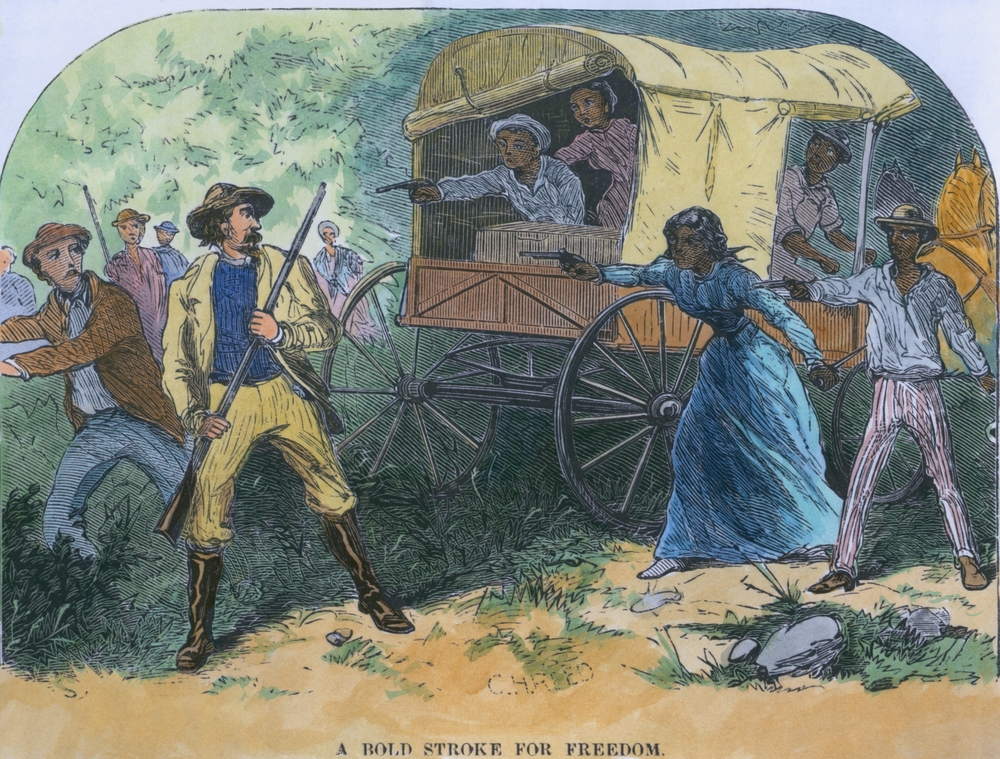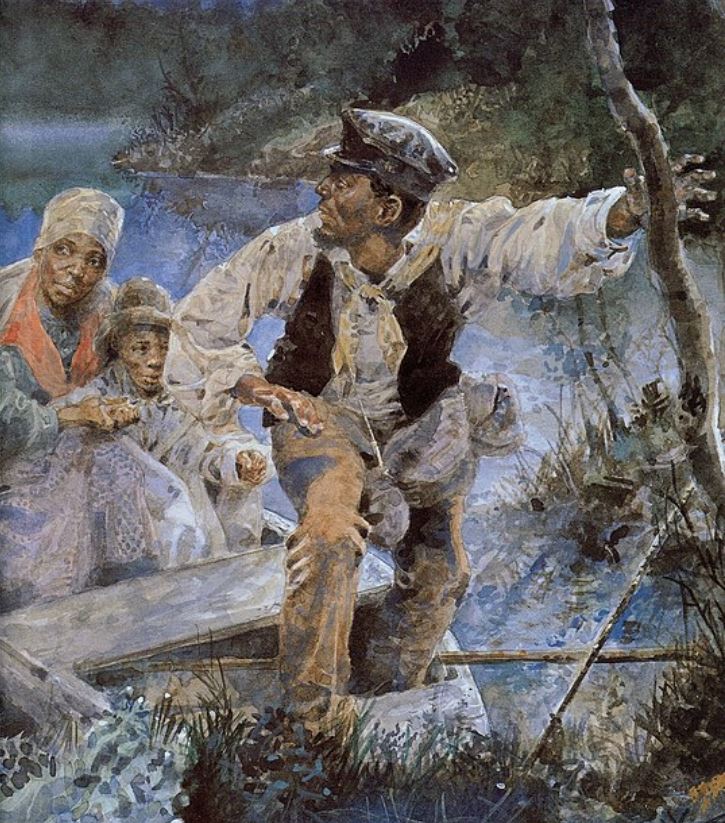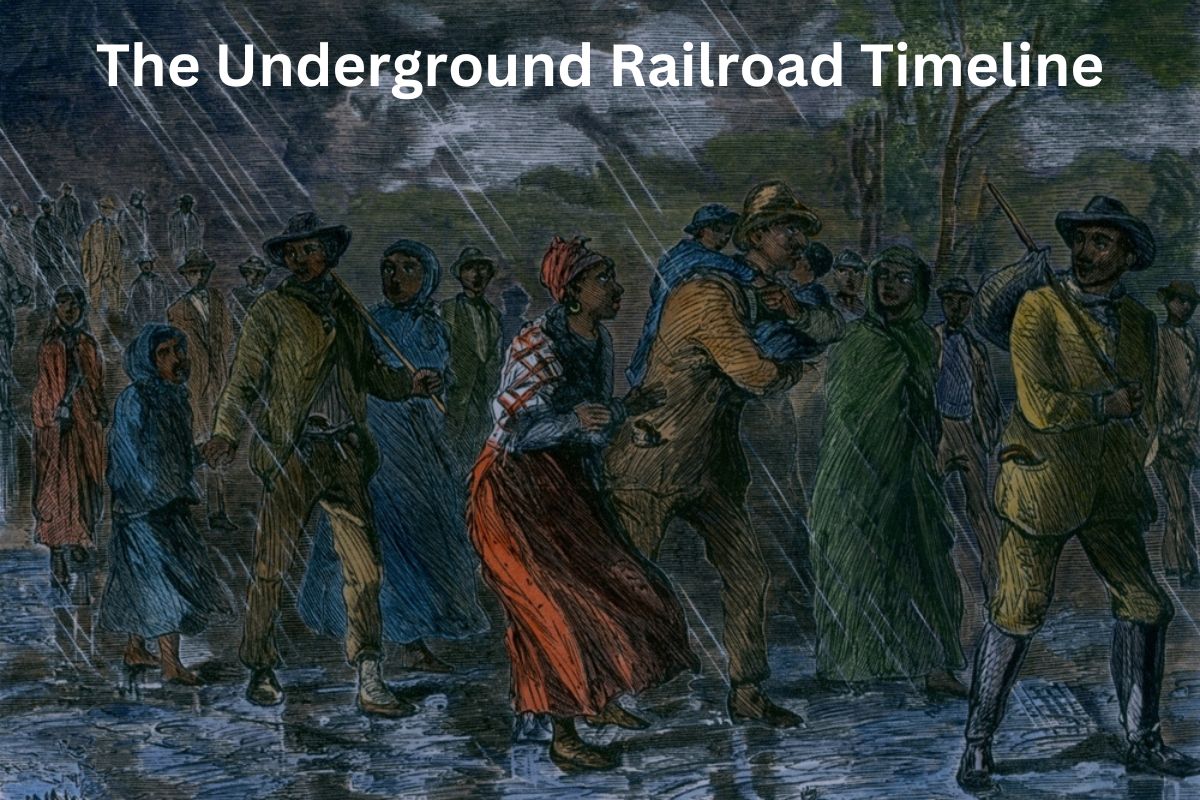The Underground Railroad was a clandestine network of escape routes and safe houses used by enslaved African Americans to seek freedom during the 18th and 19th centuries.
Despite its name, the Underground Railroad was not an actual railroad, but a metaphorical term for the complex system of routes and assistance provided by abolitionists and sympathizers.
This secret network emerged in response to the oppressive institution of slavery and played a pivotal role in helping thousands of enslaved individuals escape to free states and Canada.
Operating in defiance of laws and risking their own safety, abolitionists and conductors on the Underground Railroad facilitated escapes, provided shelter, and supported the fight against slavery.
| Time Period | Year | Event |
|---|---|---|
| Late 18th century | 1780 | Pennsylvania passes the Gradual Abolition Act, which initiates the process of emancipation for enslaved people in the state. |
| Early 19th century | 1808 | The United States bans the importation of enslaved people from Africa. |
| 1820s | The term “Underground Railroad” begins to be used to describe the secret network of escape routes. | |
| 1831 | William Lloyd Garrison starts publishing “The Liberator,” an abolitionist newspaper that advocates for the immediate and complete emancipation of enslaved people. | |
| Mid-19th century | 1850 | The Fugitive Slave Act is passed as part of the Compromise of 1850, making it easier for slaveholders to reclaim escaped slaves in free states. |
| 1852 | Harriet Beecher Stowe publishes the anti-slavery novel “Uncle Tom’s Cabin,” which brings attention to the horrors of slavery and contributes to the growing abolitionist movement. | |
| 1854 | The Kansas-Nebraska Act is passed, leading to violent conflicts between pro-slavery and anti-slavery factions in Kansas. | |
| 1857 | The Dred Scott decision by the Supreme Court declares that enslaved people are property and do not have the rights of citizens. | |
| 1859 | John Brown leads a raid on the federal armory in Harpers Ferry, Virginia (now West Virginia), aiming to arm enslaved people and start a rebellion against slavery. The raid fails, and Brown is executed. | |
| Late 19th century | 1861-1865 | The American Civil War takes place, with the issue of slavery being a central cause. The Underground Railroad continues to operate during the war, aiding escaped slaves and providing intelligence to the Union Army. |
| 1863 | President Abraham Lincoln issues the Emancipation Proclamation, declaring all enslaved people in Confederate territory to be free. | |
| 1865 | The Thirteenth Amendment to the United States Constitution is ratified, officially abolishing slavery throughout the country. |
Timeline of The Underground Railroad
1780 – Pennsylvania passes the Gradual Abolition Act
The Gradual Abolition Act, also known as the Pennsylvania Act for the Gradual Abolition of Slavery, was a significant legislative step towards the abolition of slavery.
It stated that children born to enslaved mothers after its enactment would be considered free, but they would still be indentured to their mother’s owner until their late teens or early twenties.
Also Read: Facts About The Underground Railroad
While the Act did not immediately free enslaved people, it marked a crucial turning point in the fight against slavery. It demonstrated that gradual emancipation was a viable option, which inspired abolitionists and enslaved individuals to push for further progress.

1808 – The United States bans the importation of enslaved people from Africa
The year 1808 is significant because it marks the point at which the United States officially abolished the transatlantic slave trade. The U.S. Constitution had originally permitted the importation of enslaved Africans until this date, as part of a compromise made during the Constitutional Convention in 1787.
Also Read: Abolitionist Movement Timeline
The abolition of the slave trade did not immediately end the institution of slavery, as enslaved people already present in the country continued to be bought and sold. However, it reduced the supply of new enslaved individuals and shifted the focus of abolitionist efforts towards ending slavery itself.
1820s – The term “Underground Railroad” begins to be used to describe the secret network of escape routes
The term “Underground Railroad” is believed to have originated around the 1820s, although its precise origin is difficult to pinpoint.
It is thought to have emerged as a metaphorical description of the clandestine network of individuals, safe houses, and escape routes used by enslaved people to escape to freedom.
The use of the term “Underground Railroad” evoked the image of a railway system hidden beneath the surface, with “stations” (safe houses) and “conductors” (individuals who guided and aided the escapees).
The metaphor captured the organized and secretive nature of the escape routes and conveyed a sense of solidarity and resistance against the institution of slavery.
1831 – William Lloyd Garrison starts publishing “The Liberator”
William Lloyd Garrison starts publishing “The Liberator,” an abolitionist newspaper that advocates for the immediate and complete emancipation of enslaved people.
In January 1831, William Lloyd Garrison published the first issue of “The Liberator” in Boston, Massachusetts. It quickly became one of the most influential abolitionist newspapers of its time and played a significant role in shaping public opinion and advancing the cause of emancipation.
“The Liberator” was known for its uncompromising stance against slavery. Garrison believed in the immediate and unconditional emancipation of enslaved individuals and used the newspaper as a platform to advocate for this goal.
Garrison’s writings in “The Liberator” denounced slavery as a moral evil and called for the end of the institution. He argued for the inherent rights and humanity of all people, regardless of race, and vehemently criticized the economic, social, and political systems that sustained slavery.
The newspaper faced significant opposition and backlash from pro-slavery supporters and even some moderate abolitionists who believed that Garrison’s uncompromising stance was too radical. Garrison himself faced numerous threats and acts of violence due to his activism.

1839 – Harriet Tubman escapes slavery and eventually becomes a “conductor” on the network
Harriet Tubman, born into slavery around 1822 in Maryland, experienced the brutality and oppression of slavery firsthand. In 1839, she seized an opportunity to escape from her enslavement, embarking on a journey toward freedom.
Tubman’s escape was a dangerous and daring act. Leaving her family behind, she navigated through forests, marshes, and treacherous terrains under cover of darkness, making her way to Pennsylvania, a free state.
Tubman’s successful escape fueled her determination to liberate others from bondage. Over the course of the following years, she returned to the South multiple times, putting her life at risk to rescue enslaved individuals and guide them to freedom.
Tubman became one of the most renowned and fearless “conductors” on the Underground Railroad. As a conductor, she led countless enslaved people to safety, utilizing her knowledge of escape routes, safe houses, and tactics to avoid capture.
Tubman’s exceptional skills as a conductor earned her the nickname “Moses” among those she helped to escape. She demonstrated remarkable courage and resourcefulness, employing various strategies such as disguises, secret signals, and utilizing the cover of darkness to navigate and elude pursuers.
Despite the ever-present danger, Tubman is believed to have made approximately 13 expeditions and rescued around 70 enslaved individuals during her time as a conductor on the Underground Railroad.
1850 – The Fugitive Slave Act is passed as part of the Compromise of 1850
The Fugitive Slave Act of 1850 was a law enacted by the United States Congress as part of the Compromise of 1850, a series of legislative measures aimed at addressing tensions between free and slave states.
The Act strengthened the rights of slaveholders by making it easier for them to capture and reclaim enslaved people who had escaped to free states.
Also Read: Facts About the Fugitive Slave Act
The Fugitive Slave Act required citizens to assist in the capture of fugitive slaves and denied escaped slaves the right to a jury trial. This led to widespread outrage among abolitionists and sympathizers who saw it as a violation of basic human rights.
As a response to the Fugitive Slave Act, the Underground Railroad intensified its efforts to assist escaped slaves, often guiding them to Canada, where slavery was prohibited.
1852 – Harriet Beecher Stowe publishes the anti-slavery novel “Uncle Tom’s Cabin”
Harriet Beecher Stowe publishes the anti-slavery novel “Uncle Tom’s Cabin,” which brings attention to the horrors of slavery and contributes to the growing abolitionist movement.
“Uncle Tom’s Cabin” is a novel written by Harriet Beecher Stowe that vividly depicted the harsh realities of slavery. The book was an immediate sensation and became a bestseller both in the United States and internationally.
The novel portrayed the suffering of enslaved individuals, the brutality of slaveholders, and the moral dilemmas faced by those involved in the institution of slavery. It humanized enslaved people and evoked sympathy and outrage among readers, playing a significant role in shaping public opinion against slavery.
“Uncle Tom’s Cabin” fueled the abolitionist movement, prompting increased support for the Underground Railroad and galvanizing anti-slavery sentiment in the United States.
1854 – The Kansas-Nebraska Act is passed
The Kansas-Nebraska Act of 1854 was a significant piece of legislation that allowed residents of the Kansas and Nebraska territories to decide whether to permit or prohibit slavery through popular sovereignty, overturning the Missouri Compromise of 1820.
This act heightened tensions between pro-slavery and anti-slavery factions, leading to a series of violent conflicts and clashes known as “Bleeding Kansas.” Both sides sought to establish their influence over the region, resulting in armed confrontations, raids, and retaliatory violence.
The events in Kansas further polarized the nation and highlighted the deep divisions between those who supported and opposed slavery. It fueled the determination of abolitionists to assist escaped slaves through the Underground Railroad and added urgency to the movement to end slavery altogether.
1857 – The Dred Scott decision by the Supreme Court declares that enslaved people are property and do not have the rights of citizens
The Dred Scott v. Sandford Supreme Court case was a landmark decision that had a significant impact on the abolitionist movement and the Underground Railroad. In this ruling, the court held that enslaved people, whether living in free states or territories, were considered property and could not claim citizenship or sue in federal courts.
The decision outraged abolitionists and further deepened the divisions between pro-slavery and anti-slavery factions in the country. It underscored the need for a more comprehensive and decisive action to end slavery.
1859 – John Brown leads a raid on the federal armory in Harpers Ferry, Virginia (now West Virginia)
John Brown leads a raid on the federal armory in Harpers Ferry, Virginia (now West Virginia), aiming to arm enslaved people and start a rebellion against slavery. The raid fails, and Brown is executed.
Brown, an abolitionist, believed in armed resistance to slavery. In 1859, he led a raid on the federal armory at Harpers Ferry in an attempt to seize weapons and initiate a slave rebellion. However, the raid was unsuccessful, and Brown and his followers were captured by U.S. Marines.
The raid at Harpers Ferry had a profound impact on the nation. It heightened tensions between the North and the South and further polarized public opinion on the issue of slavery. Brown’s actions and subsequent execution turned him into a martyr for the abolitionist cause and fueled anti-slavery sentiments.
1861-1865 – The American Civil War takes place, with the issue of slavery being a central cause
The American Civil War takes place, with the issue of slavery being a central cause. The Underground Railroad continues to operate during the war, aiding escaped slaves and providing intelligence to the Union Army.
The American Civil War was a major armed conflict fought between the Northern states (the Union) and the Southern states (the Confederacy). Slavery was a central issue that drove the secession of Southern states and ultimately led to the war.
Throughout the war, the Underground Railroad played a crucial role in supporting escaped slaves and providing valuable intelligence to the Union Army. Many former slaves joined the Union Army as soldiers, contributing to the fight against the Confederacy and the abolition of slavery.
1863 – President Abraham Lincoln issues the Emancipation Proclamation
The Emancipation Proclamation was a historic executive order issued by President Abraham Lincoln during the Civil War. It declared that all enslaved people in Confederate territory were to be considered free as of January 1, 1863.
While the Emancipation Proclamation did not immediately free all enslaved individuals, it had a profound symbolic and practical impact. It reshaped the purpose of the war by making the abolition of slavery an explicit goal and transforming the conflict into a war for freedom.
It also encouraged enslaved people in Confederate states to seek their own liberation and provided additional motivation for their flight through the Underground Railroad.
1865 – The Thirteenth Amendment to the United States Constitution is ratified
The Thirteenth Amendment to the United States Constitution was a pivotal moment in American history, as it abolished slavery and involuntary servitude. It was ratified on December 6, 1865, following the end of the Civil War and the Confederate surrender.
The amendment stated, “Neither slavery nor involuntary servitude, except as a punishment for crime whereof the party shall have been duly convicted, shall exist within the United States, or any place subject to their jurisdiction.”
The ratification of the Thirteenth Amendment marked the end of legally sanctioned slavery in the United States. It was a profound victory for the abolitionist movement and the culmination of years of struggle, including the efforts of the Underground Railroad.
The Underground Railroad played a significant role in highlighting the injustice and cruelty of slavery, helping to change public opinion and contributing to the eventual ratification of the Thirteenth Amendment. The tireless work of abolitionists, conductors, and those who risked their lives to support the Underground Railroad proved instrumental in the fight for freedom and equality.
